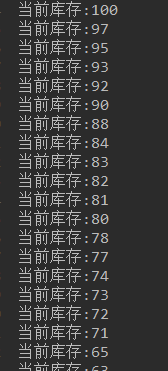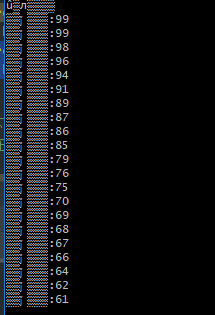在高并发场景下,锁是必不可少的存在,可以避免脏读的发生,现在定义一个场景来模拟高并发场景下有什么问题。
场景:用户下单,每下一次单就把库存数减一。
步骤一,创建springboot项目distributed_lock_redis
步骤二,引入依赖
<groupId>curise.distributed.actualize</groupId>
<artifactId>lock_redis</artifactId>
<version>1.0-SNAPSHOT</version>
<description>基于redis实现分布式锁</description>
<packaging>jar</packaging>
<parent>
<groupId>org.springframework.boot</groupId>
<artifactId>spring-boot-starter-parent</artifactId>
<version>2.0.2.RELEASE</version>
<relativePath/>
</parent>
<properties>
<project.build.sourceEncoding>UTF-8</project.build.sourceEncoding>
<project.reporting.outputEncoding>UTF-8</project.reporting.outputEncoding>
<java.version>1.8</java.version>
</properties>
<dependencies>
<dependency>
<groupId>org.springframework.boot</groupId>
<artifactId>spring-boot-starter</artifactId>
</dependency>
<dependency>
<groupId>org.springframework.boot</groupId>
<artifactId>spring-boot-starter-test</artifactId>
<scope>test</scope>
</dependency>
<dependency>
<groupId>org.springframework.boot</groupId>
<artifactId>spring-boot-starter-redis</artifactId>
<version>1.4.7.RELEASE</version>
</dependency>
<dependency>
<groupId>org.springframework.boot</groupId>
<artifactId>spring-boot-starter-web</artifactId>
</dependency>
</dependencies>
<build>
<plugins>
<plugin>
<groupId>org.springframework.boot</groupId>
<artifactId>spring-boot-maven-plugin</artifactId>
</plugin>
</plugins>
</build>步骤三,创建配置文件application.yml、application-dev.yml、application-prob.yml,分别作如下配置
spring:
profiles:
active: devserver:
port: 8084
spring:
redis:
host: 192.168.0.117
password: 123456
port: 6379
database: 0
jedis:
pool:
max-idle: 8
min-idle: 0
max-active: 8server:
port: 8085
spring:
redis:
host: 192.168.0.117
password: 123456
port: 6379
database: 0
jedis:
pool:
max-idle: 8
min-idle: 0
max-active: 8其中application-dev.yml、application-prob.yml只是端口不一致。
第四步,创建应用主类Application
@SpringBootApplication
public class Application {
public static void main(String[] args) {
SpringApplication.run(Application.class, args);
}
}
第五步, 创建RedisConfiguration配置类
import com.fasterxml.jackson.annotation.JsonAutoDetect;
import com.fasterxml.jackson.annotation.PropertyAccessor;
import com.fasterxml.jackson.databind.ObjectMapper;
import org.springframework.beans.factory.annotation.Qualifier;
import org.springframework.beans.factory.annotation.Value;
import org.springframework.context.annotation.Bean;
import org.springframework.context.annotation.Configuration;
import org.springframework.context.annotation.Primary;
import org.springframework.data.redis.connection.RedisConnectionFactory;
import org.springframework.data.redis.connection.RedisPassword;
import org.springframework.data.redis.connection.RedisStandaloneConfiguration;
import org.springframework.data.redis.connection.jedis.JedisConnectionFactory;
import org.springframework.data.redis.core.RedisTemplate;
import org.springframework.data.redis.core.StringRedisTemplate;
import org.springframework.data.redis.serializer.Jackson2JsonRedisSerializer;
import org.springframework.data.redis.serializer.RedisSerializer;
import org.springframework.data.redis.serializer.StringRedisSerializer;
@Configuration
public class RedisConfiguration {
@Value("${spring.redis.host}")
private String redisHost;
@Value("${spring.redis.port}")
private int redisPort;
@Value("${spring.redis.password}")
private String redisPassword;
@Value("${spring.redis.database}")
private int redisDatabase;
@Primary
@Bean(name = "redisConnectionFactory")
public RedisConnectionFactory redisConnectionFactory() {
RedisStandaloneConfiguration redisStandaloneConfiguration = new RedisStandaloneConfiguration(redisHost, redisPort);
redisStandaloneConfiguration.setDatabase(redisDatabase);
redisStandaloneConfiguration.setPassword(RedisPassword.of(redisPassword));
return new JedisConnectionFactory(redisStandaloneConfiguration);
}
@SuppressWarnings("rawtypes")
@Bean(name = "redisTemplate")
public RedisTemplate redisTemplate(@Qualifier("redisConnectionFactory") RedisConnectionFactory cf) {
RedisTemplate redisTemplate = new RedisTemplate();
redisTemplate.setConnectionFactory(cf);
setSerializer(redisTemplate);
return redisTemplate;
}
@Bean(name = "stringRedisTemplate")
public StringRedisTemplate stringRedisTemplate(@Qualifier("redisConnectionFactory") RedisConnectionFactory cf) {
StringRedisTemplate stringRedisTemplate = new StringRedisTemplate();
stringRedisTemplate.setConnectionFactory(cf);
setStringSerializer(stringRedisTemplate);
return stringRedisTemplate;
}
@SuppressWarnings("rawtypes")
private void setSerializer(RedisTemplate template) {
// 使用Jackson2JsonRedisSerialize 替换默认序列化
Jackson2JsonRedisSerializer jackson2JsonRedisSerializer = new Jackson2JsonRedisSerializer(Object.class);
ObjectMapper objectMapper = new ObjectMapper();
objectMapper.setVisibility(PropertyAccessor.ALL, JsonAutoDetect.Visibility.ANY);
objectMapper.enableDefaultTyping(ObjectMapper.DefaultTyping.NON_FINAL);
jackson2JsonRedisSerializer.setObjectMapper(objectMapper);
// 设置value的序列化规则和 key的序列化规则
template.setValueSerializer(jackson2JsonRedisSerializer);
template.setKeySerializer(new StringRedisSerializer());
template.setHashKeySerializer(jackson2JsonRedisSerializer);
template.setHashValueSerializer(jackson2JsonRedisSerializer);
template.setDefaultSerializer(jackson2JsonRedisSerializer);
template.setEnableDefaultSerializer(true);
template.afterPropertiesSet();
}
@SuppressWarnings("rawtypes")
private void setStringSerializer(RedisTemplate<String, String> template) {
RedisSerializer stringRedisSerializer = new StringRedisSerializer();
template.setDefaultSerializer(stringRedisSerializer);
template.setKeySerializer(stringRedisSerializer);
template.setValueSerializer(stringRedisSerializer);
template.setHashKeySerializer(stringRedisSerializer);
template.setHashValueSerializer(stringRedisSerializer);
}
}第六步,创建StockController,并提供order方法实现减库存的逻辑
@RestController
public class StockController {
@Autowired
private RedisTemplate redisTemplate;
/**
* 模拟下单减库存操作
* 1.存在高并发问题
*
* @return
*/
@GetMapping("order")
public String order() {
ValueOperations<String, Integer> redis = redisTemplate.opsForValue();
String key = "stock";
Integer stock = redis.get(key);
if (stock > 0) {
System.out.println("当前库存:" + stock);
stock = stock - 1;
redis.set(key, stock);
} else {
System.out.println("库存不足");
}
return "end";
}
}第七步,在redis-cli 执行命令 set stock 100
127.0.0.1:6379> set stock 100
OK
127.0.0.1:6379> get stock
"100"
127.0.0.1:6379>
第八步,启动应用
第九步,使用JMeter压测工具测试
JMeter下载地址:http://jmeter.apache.org/download_jmeter.cgi
直接双击解压后bin目录下的jar文件启动JMeter

第十步,配置请求
测试计划——》添加——》线程(用户)——》setUp线程组


线程数:20
Ramp-Up时间:0
循环次数:2
表示在同一时间发送启动20个线程发起请求,一共循环两次发送,即一共40个请求

set-Up线程组——》添加取样器——》HTTP请求


set-Up线程组——》添加——》监听器——》聚合报告
点击启动按钮发送请求

查看控制台打印

如上图,出现了脏读问题,因为不是同步执行,导致多个线程可能获取同样的库存数
如何解决这个问题?
在单机部署环境下,使用synchronized是最简单的方式,改一下order方法
@GetMapping("order")
public String order() {
ValueOperations<String, Integer> redis = redisTemplate.opsForValue();
String key = "stock";
synchronized (this) {
Integer stock = redis.get(key);
if (stock > 0) {
System.out.println("当前库存:" + stock);
stock = stock - 1;
redis.set(key, stock);
} else {
System.out.println("库存不足");
}
}
return "end";
}使用JMeter重新测试

没有出现高并发问题。
但是如果在分布式环境下这样还会有用吗,比如有个nginx作负载均衡服务器,将order请求以轮询的方式发送到8084端口和8085端口,这个时候还是会有高并发问题。因为synchronized只能在当前JVM内加锁,一个应用部署两个端口后就是在两个JVM内,还是会产生脏读问题,这里我就不演示了,有兴趣的话你可以自己尝试。
分布式锁实现
分布式锁有多种实现
1.数据库方式
2.基于zookeeper
3.基于redis
不管使用什么方式,有几点是实现分布式锁必须要考虑到的。
- 互斥:互斥好像是必须的,否则怎么叫锁。
- 死锁: 如果一个线程获得锁,然后挂了,并没有释放锁,致使其他节点(线程)永远无法获取锁,这就是死锁。分布式锁必须做到避免死锁。
- 性能: 高并发分布式系统中,线程互斥等待会成为性能瓶颈,需要好的中间件和实现来保证性能。
- 锁特性:考虑到复杂的场景,分布式锁不能只是加锁,然后一直等待。最好实现如Java Lock的一些功能如:锁判断,超时设置,可重入性等。
这里我们通过redis方式实现分布式锁。
在redis中有如下命令: setnx,当key不存在时,执行set操作返回1,当key存在什么也不做返回0

再次修改order方法
@GetMapping("order")
public String order() {
String lockName = "lock";
// 获取锁
Boolean lock = redisTemplate.opsForValue().setIfAbsent(lockName,"lock");
redisTemplate.expire(lockName,2,TimeUnit.MINUTES);
if (!lock) {
System.out.println("没有获得锁");
return "";
}
try {
ValueOperations<String, Integer> redis = redisTemplate.opsForValue();
String key = "stock";
Integer stock = redis.get(key);
if (stock > 0) {
System.out.println("当前库存:" + stock);
stock = stock - 1;
redis.set(key, stock);
} else {
System.out.println("库存不足");
}
} catch (Exception e) {
e.printStackTrace();
} finally {
// 释放锁
redisTemplate.delete(lockName);
}
return "end";
}将application.yml的spring.profiles.active修改为dev,然后使用maven将应用打成jar包
使用命令启动jar包java -jar lock_redis-1.0-SNAPSHOT.jar
将application.yml的spring.profiles.active修改为prob,在idea中启动应用
现在成功把应用部署了两个实例,分别是8084端口和8085端口
配置nginx,实现负载均衡
http {
include mime.types;
default_type application/octet-stream;
#log_format main '$remote_addr - $remote_user [$time_local] "$request" '
# '$status $body_bytes_sent "$http_referer" '
# '"$http_user_agent" "$http_x_forwarded_for"';
#access_log logs/access.log main;
sendfile on;
#tcp_nopush on;
#keepalive_timeout 0;
keepalive_timeout 65;
#gzip on;
upstream test_lock{
server 192.168.0.35:8084 weight=1;
server 192.168.0.35:8085 weight=1;
}
server {
listen 80;
server_name localhost;
#charset koi8-r;
#access_log logs/host.access.log main;
location / {
proxy_pass http://test_lock;
proxy_set_header Host $http_host;
root html;
index index.html index.htm;
}
#error_page 404 /404.html;
# redirect server error pages to the static page /50x.html
#
error_page 500 502 503 504 /50x.html;
location = /50x.html {
root html;
}
# proxy the PHP scripts to Apache listening on 127.0.0.1:80
#
#location ~ \.php$ {
# proxy_pass http://127.0.0.1;
#}
# pass the PHP scripts to FastCGI server listening on 127.0.0.1:9000
#
#location ~ \.php$ {
# root html;
# fastcgi_pass 127.0.0.1:9000;
# fastcgi_index index.php;
# fastcgi_param SCRIPT_FILENAME /scripts$fastcgi_script_name;
# include fastcgi_params;
#}
# deny access to .htaccess files, if Apache's document root
# concurs with nginx's one
#
#location ~ /\.ht {
# deny all;
#}
}
# another virtual host using mix of IP-, name-, and port-based configuration
#
#server {
# listen 8000;
# listen somename:8080;
# server_name somename alias another.alias;
# location / {
# root html;
# index index.html index.htm;
# }
#}
# HTTPS server
#
#server {
# listen 443 ssl;
# server_name localhost;
# ssl_certificate cert.pem;
# ssl_certificate_key cert.key;
# ssl_session_cache shared:SSL:1m;
# ssl_session_timeout 5m;
# ssl_ciphers HIGH:!aNULL:!MD5;
# ssl_prefer_server_ciphers on;
# location / {
# root html;
# index index.html index.htm;
# }
#}
}
说明:192.168.0.35是部署应用的ip地址,也就是本机,nginx部署在192.168.0.117上,是一个虚拟机,所以记得关闭本机的防火墙,开放192.168.0.117的80端口
proxy_set_header Host $http_host; 这个配置要记得加上否则nginx在轮询时会被访问拒绝。
修改JMeter请求配置

点击启动测试
两个控制台分别打印


如图,没有发生高并发问题。
但是这样依然不完美,有如下几个问题
1.我们希望没有获得锁的不直接返回而是等待,拿到锁之后继续执行
2.获取锁和设置锁的失效时间不是原子操作,极可能刚获取锁还未设置锁的失效时间时redis或者应用服务挂掉,导致这个锁无法释放造成死锁。
3.设置锁的失效时间固定为2分钟,如果执行时间超过了这个时间则锁自动失效,还是有刚并发问题产生
解决办法:使用Redisson框架提供的Lock实现。
Redisson实现分布式锁
引入依赖
<dependency>
<groupId>org.redisson</groupId>
<artifactId>redisson</artifactId>
<version>3.10.4</version>
</dependency>
创建Redisson配置类(Redisson也支持Redis集群配置)
@Configuration
public class RedissonConfiguration {
@Bean
public RedissonClient redisson(){
Config config = new Config();
config.useSingleServer().setAddress("redis://192.168.0.117:6379").setPassword("123456").setDatabase(0);
RedissonClient redisson = Redisson.create(config);
return redisson;
}
}
修改order代码
@Autowired
private RedissonClient redisson;
@GetMapping("order")
public String order() {
String key = "stock";
String lockName = "lock";
// 获取锁
RLock lock = redisson.getLock(lockName);
//lock.lock(20000, TimeUnit.MILLISECONDS);
lock.lock();
try {
ValueOperations<String, Integer> redis = redisTemplate.opsForValue();
Integer stock = redis.get(key);
// long time = new Random().nextInt(20);
// System.out.println("睡眠s,检验是否自动续key的有效时间:"+ time );
// Thread.sleep(time * 1000);
if (stock > 0) {
System.out.println("当前库存:" + stock);
stock = stock - 1;
redis.set(key, stock);
} else {
System.out.println("库存不足");
}
} catch (Exception e) {
e.printStackTrace();
} finally {
// 释放锁
lock.unlock();
}
return "end";
}通过Redisson拿到锁后,会默认设置超时时间:30s,如果在30-10=20s时未执行完就会再续30s
JMeter测试


现在就基于Redisson框架+redis实现了分布式锁。
Redisson原理

详细原理可以查看https://www.jianshu.com/p/ae43ed4cf4ae。
代码地址:https://github.com/WYA1993/distributed_lock_redis






















 1118
1118











 被折叠的 条评论
为什么被折叠?
被折叠的 条评论
为什么被折叠?








